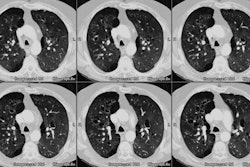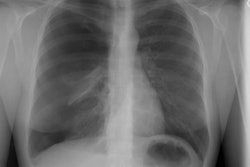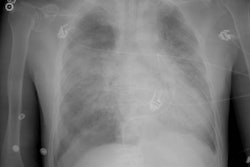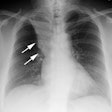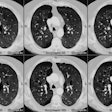Radiology 2001 Aug;220(2):455-62
Post-lung transplantation bronchiolitis obliterans syndrome: usefulness of
expiratory thin-section CT for diagnosis.
Siegel MJ, Bhalla S, Gutierrez FR, Hildebolt C, Sweet S.
PURPOSE: To assess the usefulness of thin-section expiratory computed tomography
(CT), as compared with that of thin-section inspiratory CT, in detecting airway
obstruction and air trapping in pediatric lung transplant recipients with
bronchiolitis obliterans syndrome (BOS). MATERIALS AND METHODS: Thin-section CT
scans were obtained at full inspiration and end expiration in 21 pediatric lung
transplant recipients with proved BOS and in 41 transplant recipients with
normal airways. True diagnosis was based on pulmonary function test results.
Inspiration CT scans were scored for extent of decreased attenuation of the lung
parenchyma; expiration CT scans were scored for extent of air trapping. RESULTS:
The sensitivity of inspiratory CT for enabling diagnosis of BOS was 71%; the
specificity, 78%; the positive predictive value, 62%; and the negative
predictive value, 84%. The sensitivity of expiratory CT for enabling diagnosis
of BOS was 100%; the specificity, 71%; the positive predictive value, 64%; and
the negative predictive value, 100%. Expiratory CT scores correlated more
strongly (rho = 0.75, P <.01) with pulmonary function test-based scores than
did inspiratory CT scores (rho = 0.48, P <.01). Nominal logistic regression
analysis revealed that expiratory CT was a more powerful predictor of true
diagnosis (P <.01) than was inspiratory CT (P =.10). CONCLUSION: Expiratory
CT is sensitive for depicting BOS-related airway abnormalities and may be more
useful than inspiratory CT for diagnosis of small airway obstruction.
